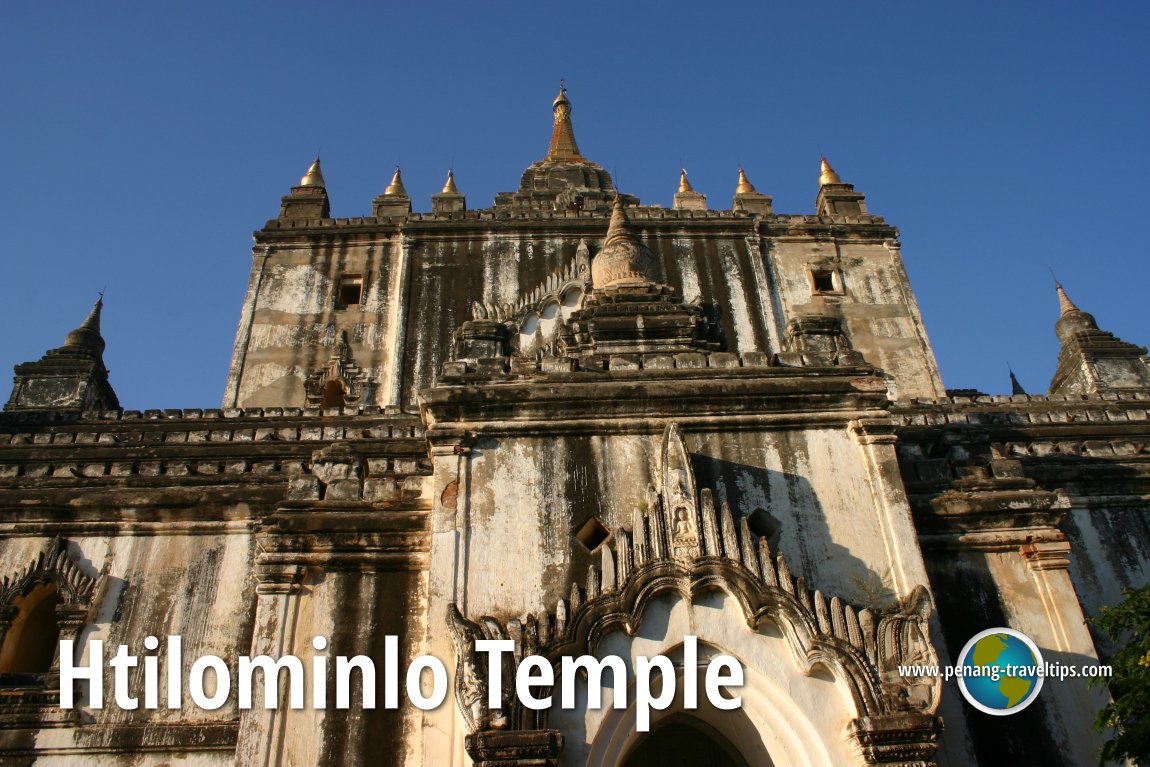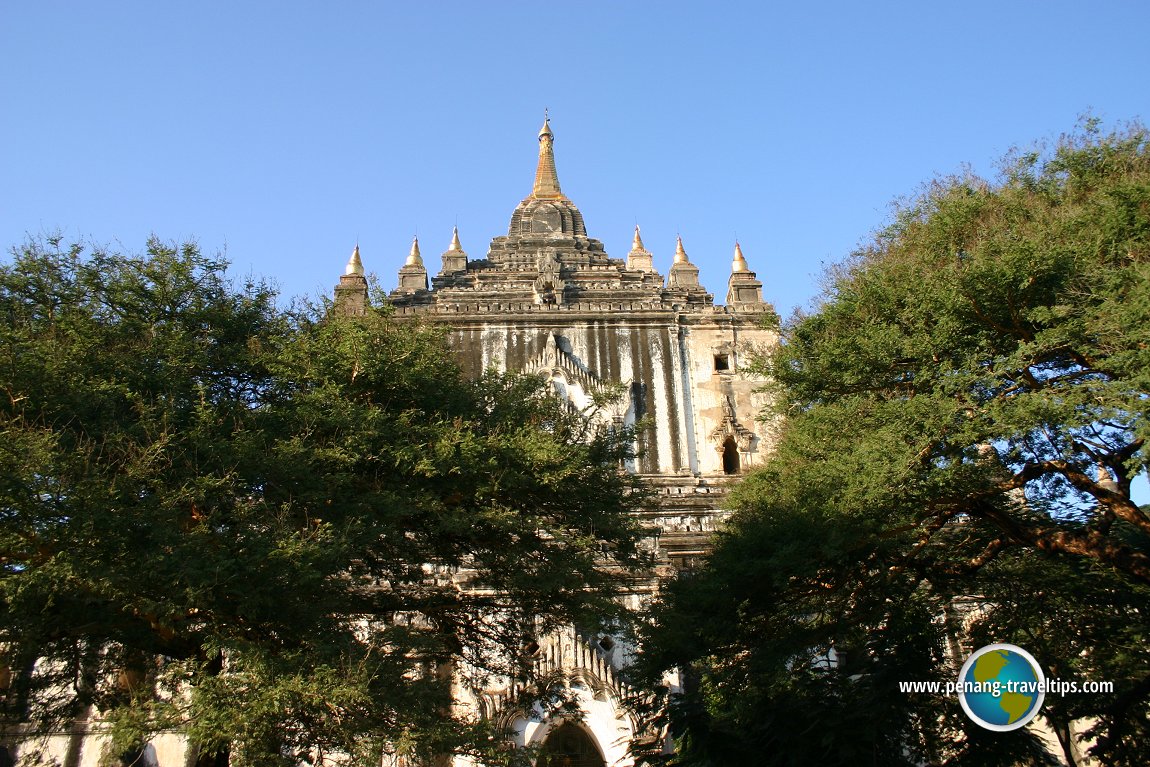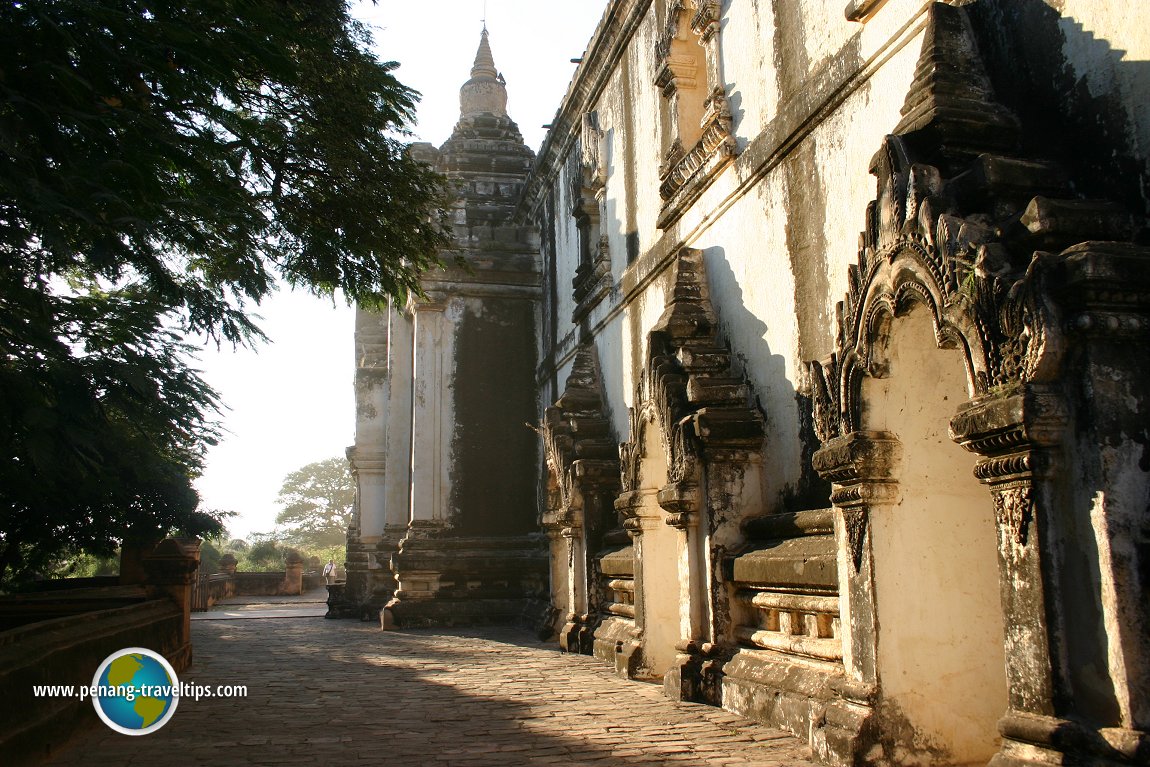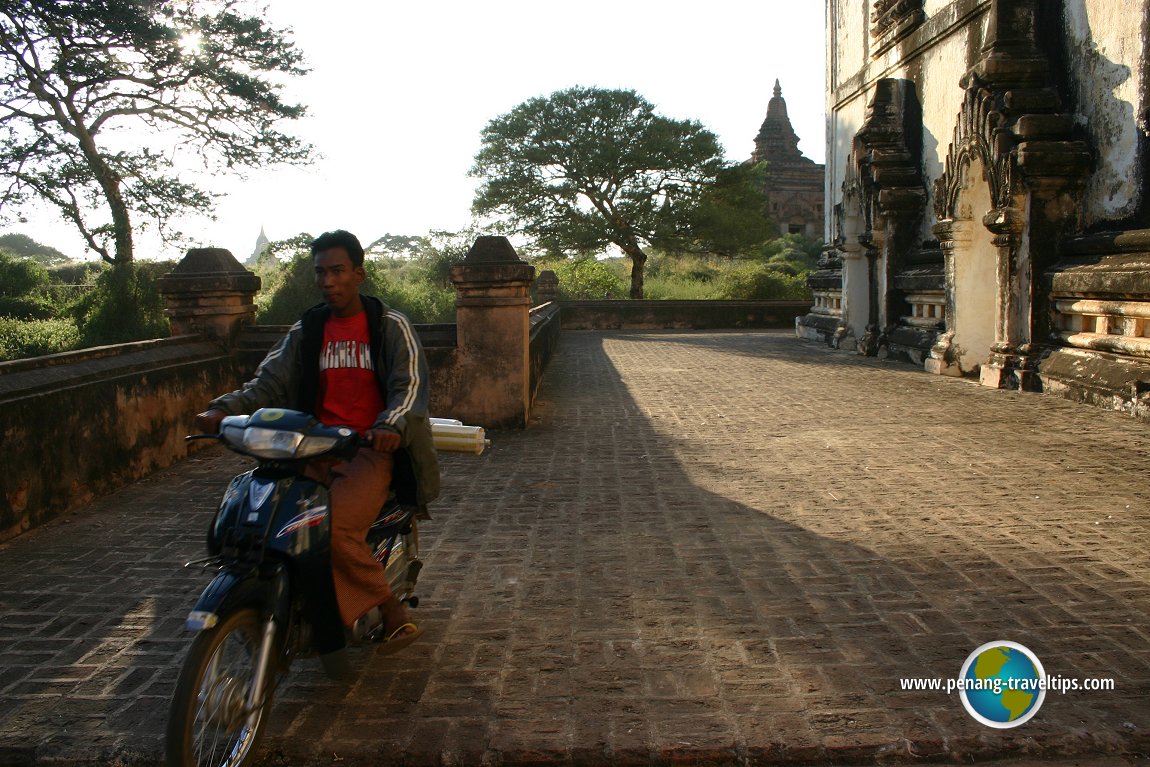
 Htilominlo Temple, Bagan (25 November, 2003)
Htilominlo Temple, Bagan (25 November, 2003)
Htilominlo Temple, also called Htilominlo Pahto, is the last Bamar-style temple built in Bagan. It is located 1.5km from Bagan old town, on the way to Nyaung U village. Htilominlo Pahto was built around 1211 by King Nadaungmya (also written Nandaungmyar, Nantaungmya and also called King Htilominlo) (A.D 1211-1230). Nandaungmyar was the son of King Narapatisithu's concubines.
Among the five sons of the king, he had the great fortune of being chosen crown price because, by tradition, the white umbrella tilted toward him. So he became his father's successor. "Htilominlo" comes from the Mon words "Tri Lawka Mingalar", which means "the most prestigious place among the three phases". He and his four other brothers created the Council of Ministers to determine state policy. The council is called Hluttaw, and is still used today for Myanmar's parliament.
Htilominlo Temple is a large temple of red brick and stone standing 46 m (150 ft) high on a low platform. Htilomino Temple is one of the largest temples of Bagan and is noted for its fine plaster carvings. There are fine murals on the interior walls. Htilominlo was originally covered in carved white stucco. Some of this finely detailed plaster still remains.
Htilominlo is similar in design and even in detail to the earlier Sulamani Pahto and the Gawdawpalin both built by King Nandaungmyar's father. Each side of Htilominlo's square base is 140 feet. There are receding square terraces with stupas or spires at each corner on the second and third levels of Htilominlo. The main shrine entrance hall is extended on the eastern side of the structure.
There are four Buddhas images on the ground floor that face the four cardinal directions and four more on the first floor (but entrance to the upper levels is no longer open to the general public). Compared to the Sulamani, the lower ambulatory of Htilominlo has a greater feeling of verticality. There are the remains of fine murals on the interior walls. The Htilominlo was damaged in the earthquake of l975, and was repaired between 1976-1979.
 To photograph the spire of Htilominlo Temple, I had to stand as far back as possible, though there are trees blocking the view (25 November, 2003)
To photograph the spire of Htilominlo Temple, I had to stand as far back as possible, though there are trees blocking the view (25 November, 2003)
 The compound of Htilominlo Temple was hot and dusty in the late afternoon, yet we had to be barefooted as it is a sacred site (25 November, 2003)
The compound of Htilominlo Temple was hot and dusty in the late afternoon, yet we had to be barefooted as it is a sacred site (25 November, 2003)
 A motorcyclist at the compound of Htilominlo Temple. (25 November, 2003)
A motorcyclist at the compound of Htilominlo Temple. (25 November, 2003)
 Latest updates on Penang Travel Tips
Latest updates on Penang Travel Tips
 Map of Roads in Penang
Map of Roads in Penang
Looking for information on Penang? Use this Map of Roads in Penang to zoom in on information about Penang, brought to you road by road.About this website

Dear visitor, thank you so much for reading this page. My name is Timothy Tye and my hobby is to find out about places, write about them and share the information with you on this website. I have been writing this site since 5 January 2003. Originally (from 2003 until 2009, the site was called AsiaExplorers. I changed the name to Penang Travel Tips in 2009, even though I describe more than just Penang but everywhere I go (I often need to tell people that "Penang Travel Tips" is not just information about Penang, but information written in Penang), especially places in Malaysia and Singapore, and in all the years since 2003, I have described over 20,000 places.
While I try my best to provide you information as accurate as I can get it to be, I do apologize for any errors and for outdated information which I am unaware. Nevertheless, I hope that what I have described here will be useful to you.
To get to know me better, do follow me on Facebook!
Copyright © 2003-2025 Timothy Tye. All Rights Reserved.

 Go Back
Go Back